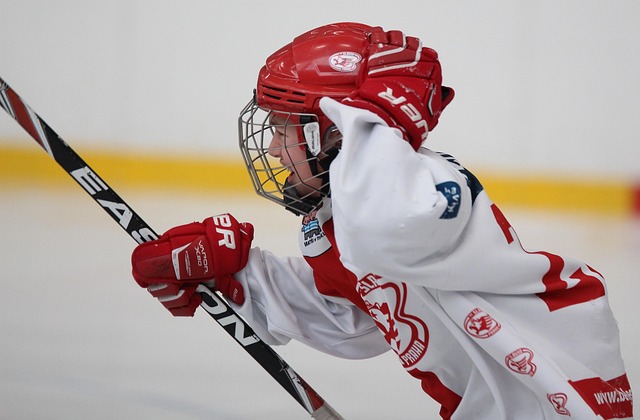PRP treatment for tendon injuries involves a multi-step process: healthcare provider cleans area, draws blood, lab separates platelets rich in growth factors, and prepares concentrated cells for injection into damaged tendon. Aftercare includes rest, ice, elevation, and reduced activity, with gentle exercises introduced later. Regular follow-ups ensure successful recovery.
“Uncover the secrets of a game-changing therapy for tendon injuries—PRP (Platelet-Rich Plasma) treatment. This comprehensive guide takes you on a journey through your potential PRP care journey, from initial consultation to post-treatment recovery.
Understanding the science behind PRP and what to expect during each step is crucial for a successful outcome. Prepare for a detailed exploration of the preparation process, the procedure itself, and practical tips for optimal recovery after your PRP treatment session.”
Understanding Your PRP Treatment Process
During a PRP (Platelet-Rich Plasma) treatment session for tendon injuries, understanding the process is key to demystifying this advanced therapeutic approach. Initially, your healthcare provider will clean and prepare the treatment area. They then draw a small amount of your blood, which is sent to a specialized lab where it’s processed using centrifugation—a process that spins the blood at high speeds to separate its components.
Focusing on platelets rich in growth factors, these concentrated cells are then extracted and prepared for injection. The healthcare provider will administer the PRP injection into the affected tendon area, aiming to accelerate healing by stimulating the body’s natural repair mechanisms. This meticulous process ensures that your body receives a powerful boost to repair and regenerate damaged tendon tissue effectively.
Preparing for Your Session: What to Expect
Preparing for your PRP treatment for tendon injuries session is a crucial step in ensuring optimal results and a smooth experience. Before your appointment, it’s important to inform your healthcare provider about any medications or supplements you’re taking, as well as your medical history, including previous injuries or conditions that might be relevant. This helps tailor the treatment to your specific needs.
On the day of your session, dress comfortably and arrive a few minutes early. You may need to undress to your underwear for the procedure, so wear clothing that allows easy access. During the PRP treatment for tendon injuries, a healthcare professional will clean your skin and inject platelet-rich plasma into the affected area. You can expect mild discomfort or bruising afterward, similar to after an injection or sports injury. Resting and elevating the treated area for a short time is often recommended to aid healing.
During the PRP Injection Procedure
During a PRP injection procedure for tendon injuries, a healthcare professional will begin by cleaning and numbing the treatment area to ensure comfort. They’ll then draw a small amount of your blood, typically from your arm, using a sterile needle. This blood is placed into a centrifuge machine, which spins it at high speeds to separate out the platelet-rich plasma (PRP). Once the PRP is extracted, it’s carefully injected back into the injured tendon area using another sterile needle. The entire process is usually quick and can be somewhat uncomfortable, but the numbing cream helps to minimize any pain.
After the injection, you might experience some mild swelling or bruising at the site, which is a normal part of the healing process. Your healthcare provider will provide aftercare instructions, including rest and ice application, to help reduce these side effects. They’ll also advise on when to expect potential improvements in tendon function and pain relief, emphasizing that individual results can vary based on several factors, including the severity of the injury and adherence to post-treatment recommendations.
Post-Treatment Care and Recovery Tips
After your PRP treatment for tendon injuries, proper post-care and recovery are essential to optimize results. It’s crucial to follow your healthcare provider’s guidance regarding rest and activity levels. Avoid strenuous activities or sports for a period recommended by your doctor to prevent disrupting the healing process. Applying ice packs can help reduce inflammation and pain, especially in the first 24-48 hours after treatment.
Additionally, keep the treated area elevated when possible to minimize swelling. Gentle exercises focusing on strength and flexibility can be introduced as advised by your provider, typically starting a few days after treatment. It’s important to maintain a balanced diet rich in proteins and nutrients to support tissue repair. Staying hydrated is also vital during recovery. Remember, consistent follow-up with your healthcare professional will ensure any concerns are addressed promptly, guiding you towards a successful recovery from PRP treatment for tendon injuries.
A PRP treatment session for tendon injuries offers a promising approach to healing and pain relief. By understanding each step of the process, from preparation to post-care, you can confidently navigate your journey towards recovery. Remember that every patient’s experience is unique, but with proper care and guidance, PRP treatment can significantly enhance your mobility and overall well-being. Embrace the benefits of this advanced therapy and take the first step towards a stronger, pain-free future.
